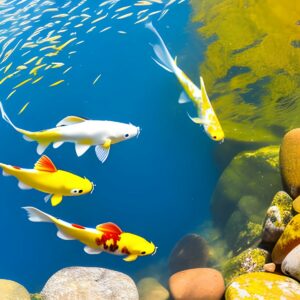Managing your Koi’s water temperature is key to their health. While it may require attention and adjustments, finding the optimal range will significantly improve their:
- Growth: Warmer temperatures within the ideal range can promote faster growth, while colder temps slow it down.
- Digestion: Warmer water aids digestion, while colder temps slow it down, requiring adjustments in feeding frequency.
- Breeding: Specific temperature ranges trigger spawning behavior in Koi.
- Activity level (physical stimulation): Warmer temps make Koi more active, while colder ones make them sluggish.
- Lifespan
In this guide, I’ll explain the water chemistry based on temperature, and the effects of temperature on Koi’s diet, teach you how to maintain an adequate temperature in your Koi fish pond/tank, and guide you through the possible health concerns.
Note: I will list some product ideas to help you select great equipment, however, please consult experienced koi keepers for more recommendations and safe use.
Koi Fish Temperature: Table of Contents
What’s the Ideal Temperature for a Koi Fish?
The ideal Koi fish temperature is about 15°C to 25°C (59°F to 77°F) in general. In this ideal temperature range, their metabolism thrives, digestion runs smoothly, and their immune system stays strong. But depending if your Koi is indoor or outdoor based, temperature needs slight adjustments:
Koi fish who live indoors often require a more strict temperature range, ideally between 65 and 75°F/18.3 and 23.9°C.
The ideal temperature for Koi fish who live in an outdoor pond ranges from 59 to 77°F/15 to 25°C.
But it’s important to understand that this temperature depends on:
- whether your Koi is outside or inside
- current weather
- and their personal preference (though the majority prefers the cooler side)
Too Hot, Too Cold: The Dangers of Temperature Extremes
Stepping outside the ideal temperature range can lead to potential health risks:
Above 28°C (82°F): Warm water holds less oxygen, making it harder for Koi to breathe. It also increases the risk of bacterial growth and parasites, posing health threats.
Below 10°C (50°F): Cold water slows down Koi’s metabolism, making them sluggish and less interested in food. Their immune system weakens, leaving them vulnerable to infections.
However, keep in mind that Koi fish can withstand different temperatures, including hot and nearly freezing temperatures – they can even hibernate under ice during winter!
Pro tip: If you keep your Koi fish outside, ensure that your pond is at least about three feet (about a meter) deep to prevent it from freezing.
Water Chemistry and Temperature
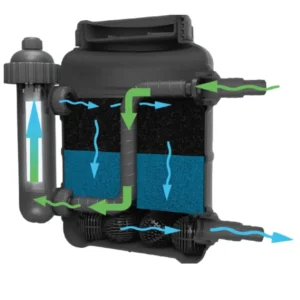
Warmer water holds less oxygen, potentially raising pH (making it more alkaline). This can increase ammonia toxicity, stressing your Koi.
To manage this balance, regularly test your water for pH and ammonia, adjusting them if needed with buffers or ammonia removers.
A good filtration system also helps by efficiently processing waste and preventing ammonia spikes.
I’ve listed a few options:
- TotalPond Complete Pond Filter with UV Clarifier
- Polar Aurora CPF-250 Pond Pressure Bio Filter
- VEVOR Bio Pressure Pond Filter
Maintaining the Right Temperature
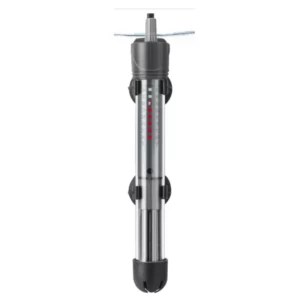
Now that you know what’s the ideal temperature for Koi and how it can affect them, let’s check out how you can constantly keep the ideal environmental temperature for your Koi fish.
Install a Water Heater
Installing a water heater in your Koi fish pond (or tank) is one of the most effective ways to maintain a proper water temperature, especially if you keep them outside.
However, choosing the right one and the installment process can be a bit tricky.
Here’s the breakdown of mandatory guidelines you should follow when using a water heater:
- Choose the right heater: Think of it as selecting a cozy blanket for your Koi. Opt for a heater specifically designed for ponds or tanks, ensuring it has enough power to warm your water volume. Seek guidance from experts at your local pond store.
- Find the perfect spot: Place the heater where it can evenly circulate water, near the pump or filter outlet. But avoid hiding it in corners or under plants.
- Install it safely: Follow the instructions diligently to prevent any electrical hazards. If you’re uncomfortable with DIY, it’s best to call a professional.
- Set the temperature: Adjust the dial to achieve the ideal range of 59-77°F (15-25°C). Some heaters come with built-in thermostats to maintain a steady temperature.
- Monitor regularly: Keep a close eye on the water temperature to ensure it remains consistent. A thermometer or digital display will come in handy.
Tips:
- Safety first: Always turn off the heater before any pond maintenance.
- Energy efficiency: Look for heaters with automatic shut-off features to save on electricity.
- Regular maintenance: Keep your heater clean and in good shape for optimal performance.
I’ve listed some high-efficiency and durable water heaters you should check out.
For tanks (indoors), you can use a simple water heater for aquariums:
- Orlushy Submersible Aquarium Heater
For ponds (outdoors) you should use de-icers. Keep in mind that not every de-icer is up for the task, so you should consider the size of the de-icer based on your pond size.
I’ve listed some of the well-sized and powerful de-icers to help you find the right one for your pond.
- Allied Precision 7621 1000-Watt Floating De-Icer
- Laguna PowerHeat Heated De-Icer for Ponds – 315W
- GUEOQTC 500 Watt Pond De-Icer with Thermostat:
Monitor the Temperature
Temperatures can fluctuate quickly: Weather changes, pond depth, sunlight exposure, and even equipment like pumps can affect water temperature.
Monitoring helps you make timely adjustments: If the temperature creeps out of the ideal range, you can correct it before it becomes a problem for your Koi.
When monitoring the temperature, you should:
- Choose the right thermometer (or multiple ones):
- Floating thermometers: Great for quick surface readings
- Digital probes: More accurate and can measure deeper water temperatures
- Smart thermometers: Connect to apps for remote monitoring and alerts
- Check regularly: At least twice a day: Once in the morning and once in the evening.
Remember: More often during extreme weather or if you’re using a heater or chiller.
Provide Shades During the Summer

Direct sunlight can cause water to overheat in outdoor ponds during hot summer.
When the summer sun starts sizzling, you should provide shade for your Koi pond.
Here are some efficient ways to create shade for your pond:
- Use sun shade sails: The most effective way to keep your Koi pond in the shade is to stretch it out and place a sun shade sail. The best part is that you won’t have to keep moving it around throughout the day.
Here are some good shades
Note: Don’t forget to consider the size of the sail before choosing one.
- Use plants: You can plant shade-providing trees, bushes, large flowers, etc. This is more like a ‘’solution-in-progress’’ idea – but it can pay off in the long run.
You can use floating plants like lilies, lotus, and swamp azaleas. Just think strategically about placing plants to block the most intense afternoon sun.
Prevent Freezing During the Winter
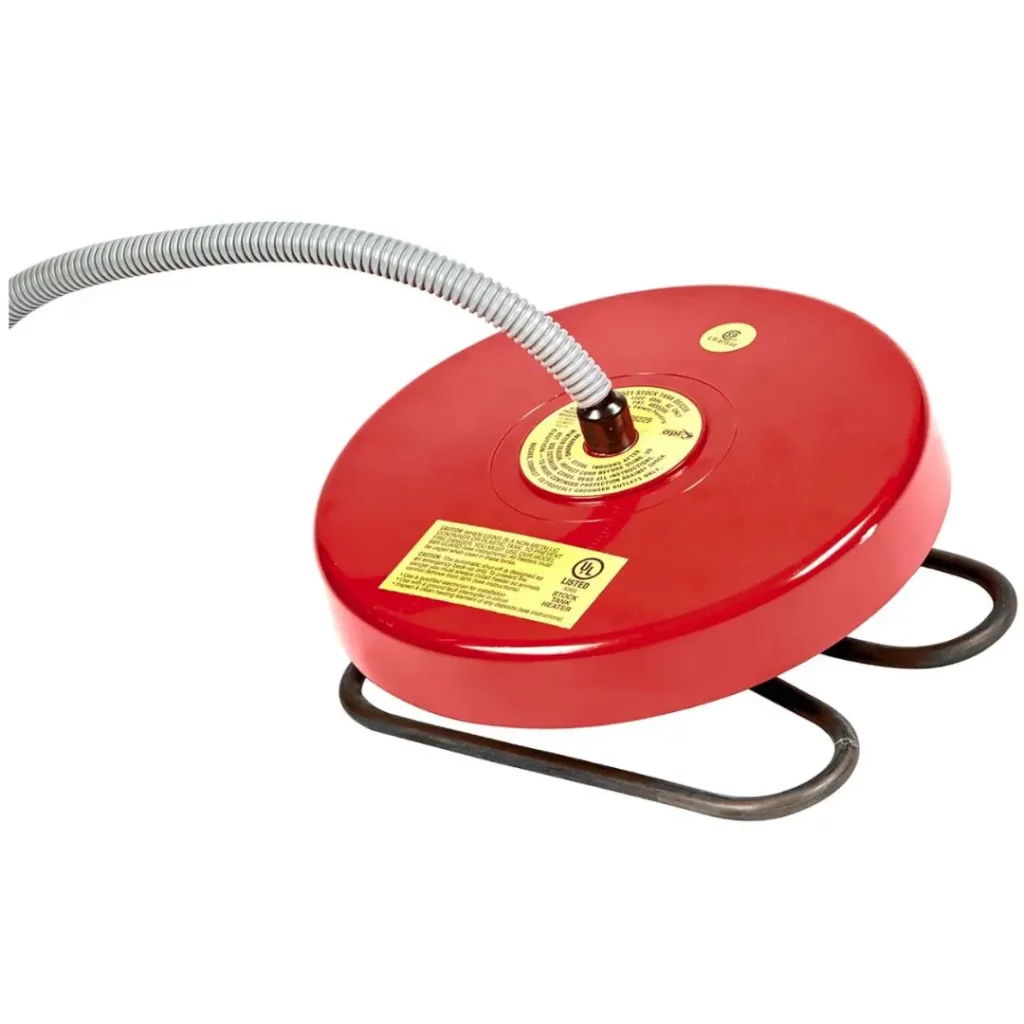
For outdoor ponds, take proactive measures to prevent freezing during winter, which can harm Koi and damage pond equipment.
- Insulate with solar blankets (floating bubble covers): Use solar blankets to insulate the pond. These covers act as a barrier, minimizing heat loss and preventing freezing. They create a protective layer that retains warmth, crucial for the health of your Koi.
It can be difficult to find these covers since they’re mostly for hot tubs, small pools, tanks, etc. To help you out, here are a couple ones to consider:
- Water (Pond) Heaters: Water heaters are great tools to maintain a consistent temperature in cold weather. These devices ensure a water area around it remains ice-free. Place heaters strategically to cover the entire pond surface, preventing ice formation.
- Cover Equipment: Your equipment needs insulation during cold weather too. So, don’t forget to cover your pumps, filters, and other pond equipment.
Note: You could use old blankets or any materials to wrap them around the equipment.
- De-icers: Use de-icers strategically. These devices create openings in the ice, allowing gases to escape and oxygen to enter. Place de-icers near the pond’s edge to maintain an ice-free zone for your Koi to access air.
Control the Temperature of Indoor Tanks
You should cool or heat your Koi’s living area for indoor Koi tanks to maintain a consistent room temperature within the ideal range, depending on the ongoing season.
During the warmer months:
- Instal an AC: If your tank is in a room with AC, you can easily keep it set around that ideal temperature.
- Place ventilating fans strategically: A fan blowing across the tank’s surface can also help with evaporation, providing a nice, cooling effect.
But make sure it’s not directly above the water!
During the colder months, you can:
- Heat up: Using a submersible aquarium heater with a reliable thermostat is your best friend for maintaining a cozy water temperature for your Koi fish.
- Insulate the tank: Just like you’d bundle up in a sweater, some insulation around the tank can help keep the heat in. Consider using foam insulation sheets or even a thick blanket.
- Control the room temperature: If possible, keep the room where your tank is located warmer during the winter. This will help reduce the heater’s workload while still providing enough warmth for the tank.
- Mind the draft: Avoid placing tanks near windows or vents that may cause temperature fluctuations during winter, as this can quickly and significantly drop the temperature.
Consider a Solar Cover

For outdoor ponds, a solar cover can help trap heat during the day and insulate the pond at night, effectively reducing temperature changes. Just make sure you leav breathing arias.
Here are some of the benefits you can expect from using solar covers for your Koi pond:
- Warmth: Solar covers act as a protective barrier, trapping the sun’s warmth and preventing heat loss. This helps to create a cozy environment, especially during colder nights.
- Heat loss prevention: Solar covers minimize heat loss from the water surface, helping to maintain the desired temperature levels.
- Cost-effective solution: Using solar covers is an energy-efficient and cost-effective method.
Note: High-quality ones can be expensive when you purchase them.
Here are some quality solar covers that offer good value for their price:
Water Flow Matters
Good water circulation prevents hot spots by distributing heat evenly, especially during those scorching days, making the water temperature much more pleasant for your Koi.
To achieve good water circulation, consider creating a waterfall feature.
Note: This can be a single waterfall or a system of multiple ones, depending on your pond’s size.
Here are a few benefits you can expect from implementing a waterfall to your Koi fish pond:
- It’s a natural, eco-friendly cooling system
- It mimics the natural habitat, providing stimulation for your Koi and other inhabitants
- It provides continual aeration to your pond, improving the pond ecosystem
- It’s an excellent decorative enhancement
Advanced Temperature Techniques
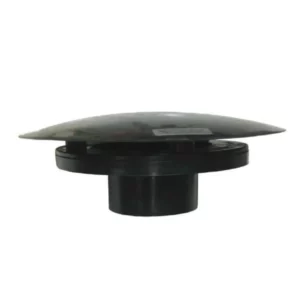
If you’re already an experienced Koi fish keeper and want to learn a few tricks, let’s explore some advanced techniques to help you with temperature maintenance.
- Bottom Drain Filters: These practical devices remove cold water from the pond floor, preventing temperature changes and keeping the overall temperature warmer.
Also, they are critical for effortless and more effective ways of preventing waste from piling up on the bottom of your Koi pond.
In case you’re not sure what kind of bottom drain filter you should opt for, here are some of the quality ones that are worth checking out:
- Dreampond Koi Toilet II Bottom Drain 4″ w/ Dome
- EasyPro EBD4A 4″ Heavy Duty Bottom Drain with air Diffuser for Koi Ponds
- DreamPond Retrofit Bottom Drain 3″ w/Air Diffuser
- Solar-Powered Chillers: Eco-friendly and efficient, these chillers use solar energy to cool the water during scorching summers, making them ideal for tropical regions.
- Automatic Temperature Controllers: For the truly dedicated, these systems constantly monitor and adjust the temperature using heaters, chillers, or aeration pumps, creating a temperature oasis for your Koi.
Common Health Issues In Koi Fish Caused by Temperature Changes
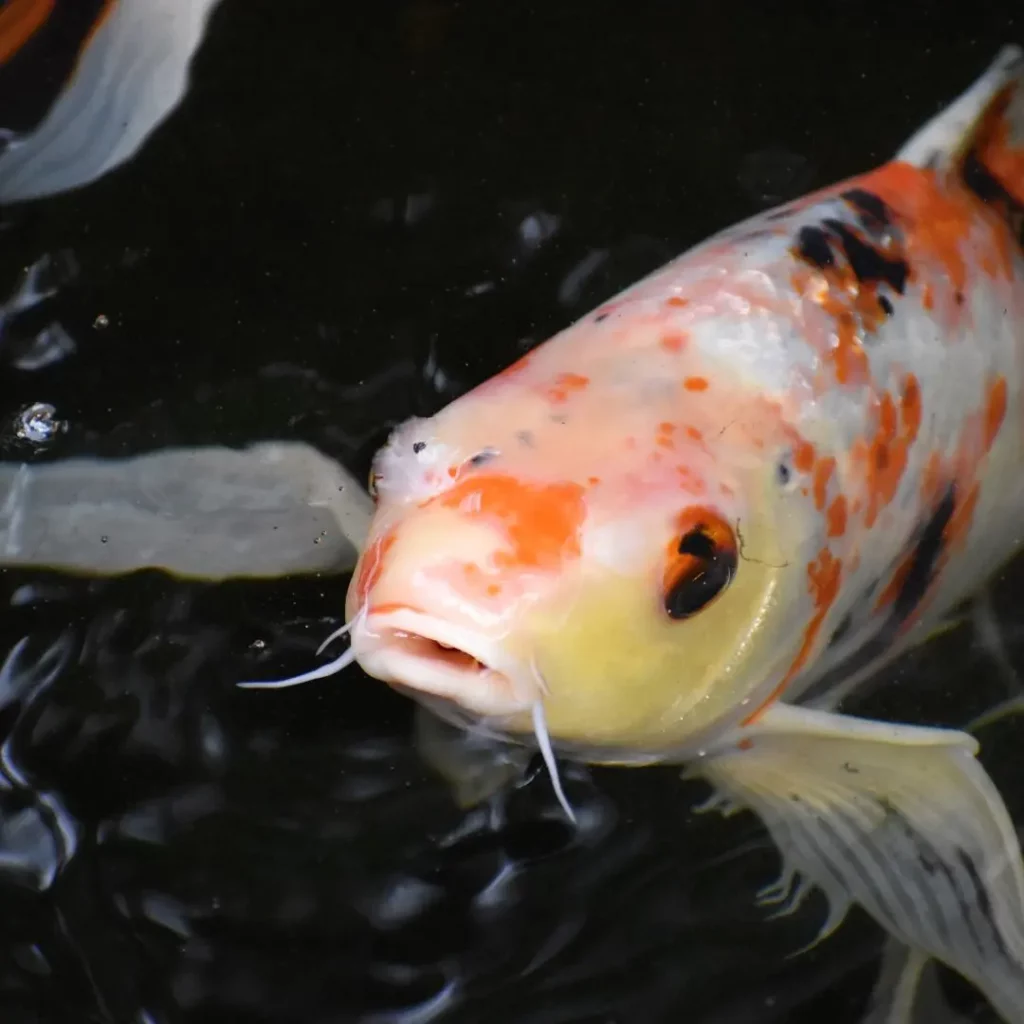
While Koi fish are highly adaptive to temperatures in their habitat, they’re still vulnerable to drastic and sudden changes.
Here are the potential health problems that could arise in your Koi fish due to unpleasant temperatures and the sudden change:
- Oxygen deficiency: A too high temperature for your Koi can make them more active. This leads to an increased need for oxygen.
Also, it can cause uncontrollable algae growth. Those pesky green strands look unsightly and can deplete the pond’s oxygen levels, making it harder for your Koi to breathe.
- Stress and weakened immune systems: Koi can get sick and stressed when the temperature in their environment isn’t comfortable. This can weaken immunity, making them more susceptible to infections and diseases.
- Parasitic infections: Some parasites thrive in warmer water, while others prefer cooler temperatures.
When the temperature is outside the ideal range for Koi, it can create an opportunity for these parasites to infest the pond and cause dangerous bacterial infections.
- Metabolic problems: Your Koi’s internal systems slow down as water temperatures drop to 65°F/18.3°C and lower. Within the 52 to 60°F/11.1 to 15.6°C range in your Koi pond (or tank), the digestion system becomes significantly slower than usual.
Once the temperature dips below the ideal range, you should opt for easily digestible foods like wheat germ.
A dietary change like this is critical for the health of a Koi fish because trapped (undigestible) food can rot in colder temperatures, posing a threat to your Koi’s health and shortening its lifespan.
Pro tip: If you’re keeping Koi fish outside during winter, hold off on feeding until spring, even when temperatures start rising again. Otherwise, sudden temperature changes and feeding can stress your Koi fish as their systems struggle to adapt.
- Respiratory issues: Koi’s gills are delicate and can easily become damaged by sudden temperature changes or prolonged exposure to extreme temperatures.
This can lead to breathing difficulties, gasping at the surface, and even suffocation.
Remember: As long as you strive to establish and maintain the ideal Koi fish temperature, you can keep your Koi healthy and happy!
My Senior Paws is a participant in the Amazon Services LLC Associates Program, an affiliate advertising program designed to provide a means for sites to earn advertising fees by advertising and linking to Amazon.com. We also participate in other affiliate programs which compensate us for referring traffic.

